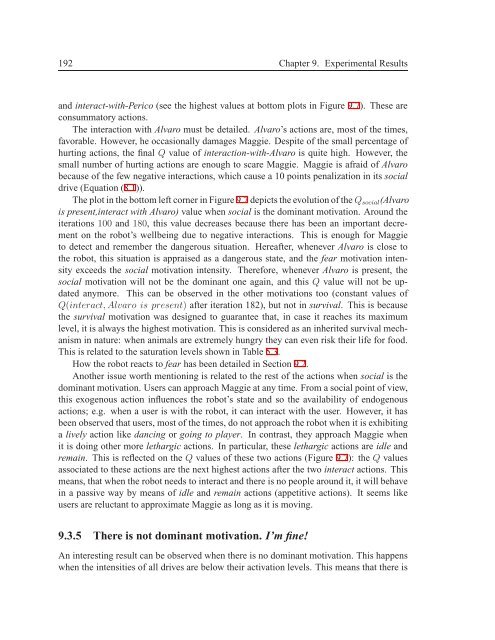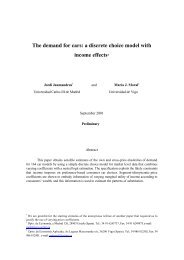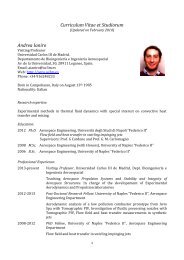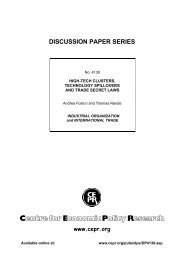TESIS DOCTORAL - Robotics Lab - Universidad Carlos III de Madrid
TESIS DOCTORAL - Robotics Lab - Universidad Carlos III de Madrid
TESIS DOCTORAL - Robotics Lab - Universidad Carlos III de Madrid
Create successful ePaper yourself
Turn your PDF publications into a flip-book with our unique Google optimized e-Paper software.
192 Chapter 9. Experimental Resultsand interact-with-Perico (see the highest values at bottom plots in Figure 9.7). These areconsummatory actions.The interaction with Alvaro must be <strong>de</strong>tailed. Alvaro’s actions are, most of the times,favorable. However, he occasionally damages Maggie. Despite of the small percentage ofhurting actions, the final Q value of interaction-with-Alvaro is quite high. However, thesmall number of hurting actions are enough to scare Maggie. Maggie is afraid of Alvarobecause of the few negative interactions, which cause a 10 points penalization in its socialdrive (Equation (8.1)).The plot in the bottom left corner in Figure 9.7 <strong>de</strong>picts the evolution of the Q social (Alvarois present,interact with Alvaro) value when social is the dominant motivation. Around theiterations 100 and 180, this value <strong>de</strong>creases because there has been an important <strong>de</strong>crementon the robot’s wellbeing due to negative interactions. This is enough for Maggieto <strong>de</strong>tect and remember the dangerous situation. Hereafter, whenever Alvaro is close tothe robot, this situation is appraised as a dangerous state, and the fear motivation intensityexceeds the social motivation intensity. Therefore, whenever Alvaro is present, thesocial motivation will not be the dominant one again, and this Q value will not be updatedanymore. This can be observed in the other motivations too (constant values ofQ(interact, Alvaro is present) after iteration 182), but not in survival. This is becausethe survival motivation was <strong>de</strong>signed to guarantee that, in case it reaches its maximumlevel, it is always the highest motivation. This is consi<strong>de</strong>red as an inherited survival mechanismin nature: when animals are extremely hungry they can even risk their life for food.This is related to the saturation levels shown in Table 5.3.How the robot reacts to fear has been <strong>de</strong>tailed in Section 9.2.Another issue worth mentioning is related to the rest of the actions when social is thedominant motivation. Users can approach Maggie at any time. From a social point of view,this exogenous action influences the robot’s state and so the availability of endogenousactions; e.g. when a user is with the robot, it can interact with the user. However, it hasbeen observed that users, most of the times, do not approach the robot when it is exhibitinga lively action like dancing or going to player. In contrast, they approach Maggie whenit is doing other more lethargic actions. In particular, these lethargic actions are idle andremain. This is reflected on the Q values of these two actions (Figure 9.7): the Q valuesassociated to these actions are the next highest actions after the two interact actions. Thismeans, that when the robot needs to interact and there is no people around it, it will behavein a passive way by means of idle and remain actions (appetitive actions). It seems likeusers are reluctant to approximate Maggie as long as it is moving.9.3.5 There is not dominant motivation. I’m fine!An interesting result can be observed when there is no dominant motivation. This happenswhen the intensities of all drives are below their activation levels. This means that there is






